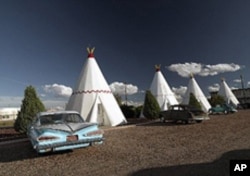The United States is often called a mosaic - a savory stew of races, cultures, and points of view.
They coexist, sometimes uncomfortably. There is even diversity training in business to help executives and workers deal with growing numbers of Americans of dissimilar backgrounds.
The nation has always been regionally diverse as well, with distinctive customs, vocabulary, accents, and even dress. But some say THAT kind of diversity is fading. And they have lots of evidence:
Shopping malls, with their huge parking lots, look the same from Hawaii to Florida to Upper Michigan. So do their franchised stores, boutiques, and fast-food restaurants.
If you listen to radio, it's harder to find unique local personalities with their quirky sayings and accents. Instead, all across the country, you hear standardized music formats and syndicated national talk shows beamed from New York or Los Angeles.
Along America's interstate highways - all built to the same specifications - you see the same road signs and gasoline stations.
Even foods that were once exotic, like Tex-Mex tacos or Japanese sushi, are available in stores and restaurants all over the nation. Satellite dishes, the Internet and cable television have brought the outside world into what were once isolated backwoods and mountain hollows.
And regional diversity is declining because Americans are moving about the nation and settling in places that once kept pretty much to themselves. And the newcomers are not wasting much time getting involved and taking leadership positions in their new communities.
In short, it can be argued that thanks to mass media, marketing, and migration, American tastes and habits - once dramatically different depending on the state or region - are rapidly blurring into indistinctive, even boring, uniformity.








